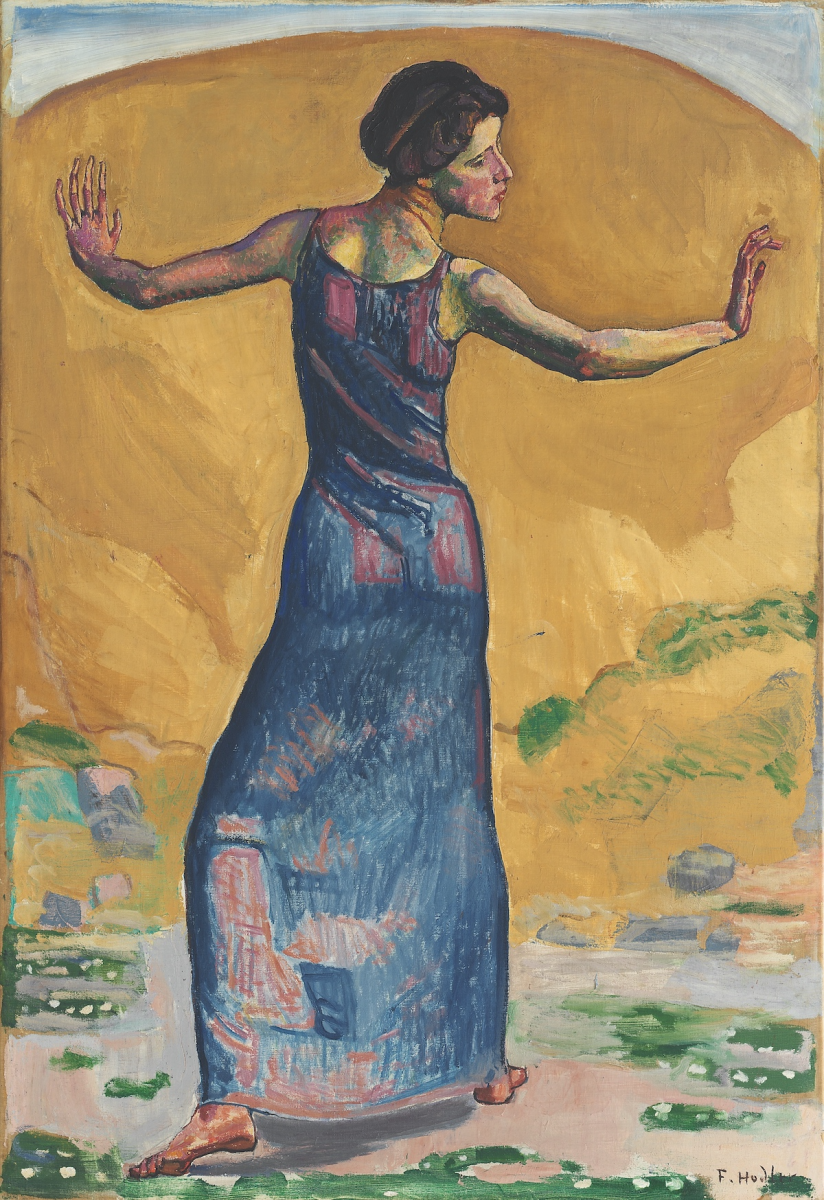Oil on canvas
134 × 93 cm
Hilti Art Foundation, Schaan
Ferdinand Hodler counts among the most important artists of of early modernism. The Swiss painter's oeuvre gained considerable international attention even during his lifetime, that was marked by repeated strokes of fate. His expressive portraits have a timeless grace and continue to fascinate audiences today. Based on his observations of nature, Hodler drew on principles of repetition, symmetry or mirroring.
Between 1909 and 1911, Ferdinand Hodler painted seven versions of Femme joyeuse (or Joyous Woman), featuring a young woman dancing. He had already made a number of pencil sketches and oil studies of his model Valentine Godé-Darel. Hodler presumably met Godé- Darel for the first time in Geneva in 1908. Born in Paris in 1873, trained as an actress and a porcelain painter, the much younger woman was not only his model but also his muse, lover and the mother of their daughter Paulette.
The young woman in the painting is wearing a comfortable summer dress that clearly reveals the contours of her slender body underneath. The composition concentrates on her bared shoulders and arms in concert with her neck and head, which are additionally accentuated by the artist's colouring. She strides with eurhythmic grace into the depths of the painting, her arms and hands stretched out in a gesture of embrace as if to define horizon and space.
Valentine Godé-Darel is also the model for Linienherrlichkeit, painted in 1908, the year she and Hodler first met. Here, she is similarly seen from behind but positioned in reverse in a work that already shows the artist's felicitous synthesis of natural and staged pose. The unmistakable unity of body, gesture and space is also a unity of body, soul and spirit in natural environs.
Uwe Wieczorek
"Art is the gesture of beauty. Plato defines the beautiful as a pale reflection of the true. The point being to open one's eyes and study nature."
Ferdinand Hodler
